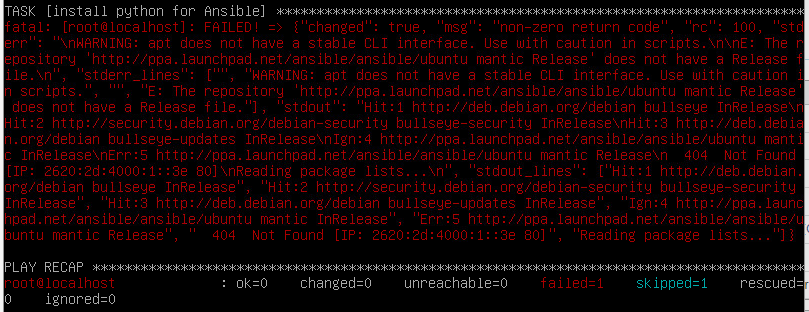

If you punch someone on the nose, you can’t expect sympathy when they punch back. This isn’t going to produce the result Hamas was going for.


If you punch someone on the nose, you can’t expect sympathy when they punch back. This isn’t going to produce the result Hamas was going for.


I’ll be the heretic here, but so far as I know you are only required to make source available when you distribute binaries. And for that matter, it doesn’t even have to be online just available upon request unless you’re using a derivative GPL that added online access as a clause.
I highly doubt the users of a web interface are required to be given access to source. There are multiple GPL-licensed web servers (I am well aware Apache is not btw) and I’ve never seen one embed a code link on every page.
Tl;Dr: Lemmy does it, but I believe it’s not required. Modify away if you so choose.


Unless you make it a point to procure an LTSC version, which Microsoft won’t even sell to you unless you have a site license.
LTSC is the only version of Windows that behaves like it’s still your computer, and I have uptime measured in months on a computer who serves Plex all day long.


This is definitely hitting the nail on the head. Until the technology trickles down into the lower-end models, it’s not anywhere near as much a cost savings when you have to buy way up in trim level to get electric as an option.
It’s also worth noting that electric economy is notably worse in cold climates - your internal combustion car generates heat for ~free, the electric heater in your Tesla does draw a fair bit of current.


You got downvoted to hell, but you’re absolutely right. The fact that FDIC exists should be evidence enough to anyone with a functional brain that depositors in a bank are creditors and do not retain ownership of their literal deposit.


It seems like you made this comment in jest, but I wouldn’t say it’s outside the realm of possibility. We can’t fly off the handle and lob accusations absent any sort of proof, but it would hardly be the first example of a corporation targeting an up-and-coming disruptive service run by amateurs.


It’s like a scale model of the war itself


I actually took the other side of this argument when Lemmy was ramping up, that the concept of Federation needed to change to make the system more accessible to non-technical users. And I was told that my idea (federating the communities) was counter to the freedom that Lemmy was designed around.
It can’t be both ways. It’s a cathedral, or it’s a bazaar. But if it’s a bazaar then we have to deal with the reality that sometimes people beat us to the places we want and have different ideas for what they should be.
Nothing is stopping you from starting worldpolitics, globalpolitics, politics2 or politics on another instance.


I was more meaning wanting the admins to fuck around with the communities a la /u/spez.


How quickly we want to become Reddit I guess.


Windows 10 LTSC (for me) generally has uptime that is the equivalent of any Linux box. I’ve been using it to host Plex for several years - before hardware transcoding support in Linuxv was really up to snuff.
LTSC is what Windows should be. It’s a shame Microsoft doesn’t make it available (legally) to normal consumers.


Yes.
And to some of the child replies, I think there’s a question of scale that often gets overlooked. In all these discussions, there seems to be two different groups commingling: ones who just need 1-2 simultaneous streams, and ones who are doing true whole-house-plus systems.
I’m serving subtitles-enabled streams to (mostly) Roku clients - who need the server to burn in the subtitle track for some insane reason. It’s nothing for my Plexbox to be serving 6 simultaneous streams. A 4790K would definitely not cut it for me.


Honestly, don’t bother with a dGPU and get a 12th or 13th gen Intel Core chip with QSV. Intel quietly tuned it up to the point where it’s faster than nVidia’s NVENC engine even in the latest gen plus you don’t have mess around with the uncap streams hack and you’re transcoding through system RAM not dGPU RAM, so far less likely that your stream limit will be artificially constrained by memory limitations.
To answer the question you asked though, the nVidia NVENC is the best solution on a dGPU. It’s performance is largely the same across the same board generation, with one exception in the GTX 10X0 series. The absolute cheapest card you can lay your hands on that has an NVENC engine is the 1050TI.
The caveat is the 1070 and 1080 have two NVENC engines. It will double max number of streams in theory, however in reality you’re memory bound on those cards and it’s more like a 33% bump.


Good note, thanks. Just made the change.


Here we go:
Any place you see <something>, you need to change it to fit and omit the <>. If something <matches> in two differet places <matches> like this, make sure they match when you’re done as well. Specifically, the postgres user and password in the lemmy docker file and the lemmy.hjson.
Finally, in Google drive the files end in .txt so you can view them. You’ll need to correct the file names when you download them if you intend to use them. You should have two docker-compose.yml, one in each of the two directories you create, and one lemmy.hjson.
From a fresh CLI Debian 11 install:
su
/sbin/usermod -aG sudo <user>
groups <user>
apt-get install sudo
cd /opt
mkdir npm
cd npm
(copy or create docker-compose.yml)
apt-get install docker-compose
docker-compose up -d
cd /opt
mkdir lemmy
cd lemmy
(copy or create docker-compose.yml and lemmy.hjson)
mkdir -p volumes/pictrs
chown -R 991:991 volumes/pictrs
docker-compose up -d
docker ps (verify containers are all running, grab ip address for lemmy container)
Configure port forwarding in npm for your lemmy container (npm should be accessible at debian_ip_address:81)
Remember to do the custom paths from the various guides. The lemmy port in this guide is 1234.
Please note I am not addressing federation or SSL or true hosting yet. I haven’t got that far yet. But if you can get the damn thing running, the last mile shouldn’t be too bad.


So I wanted to make a top-level post: I’ve got a set of example files, and instructions, that will work 100% of the time on Debian. What do you guys think would be the best way to share them? A post here and the files shared on Google Drive? GitHub? Definitely open to suggestions, but I don’t want anyone to struggle with it as hard as I have.


This worked for me, with one note:
<dbuser> and <dbpassword> need to be lemmy and password if you’re using the stock lemmy.hjson file, or the lemmy_lemmy_1 container will get stuck in a reboot loop. There’s no define in the stock file in githubusercontent currently for those, so you have to add them by hand.
For security, you have to change these.


Sorry that these are screenshots and not files, but I’m working through Chrome Remote Desktop so my options are a bit limited. This is what I get when I execute ‘ansible-playbook -i inventory/hosts lemmy.yml’ regardless of whether I have it set to terry@ or root@, and whether I use --become or not.


rm -rf /home/*
You need the directory for the mount point.